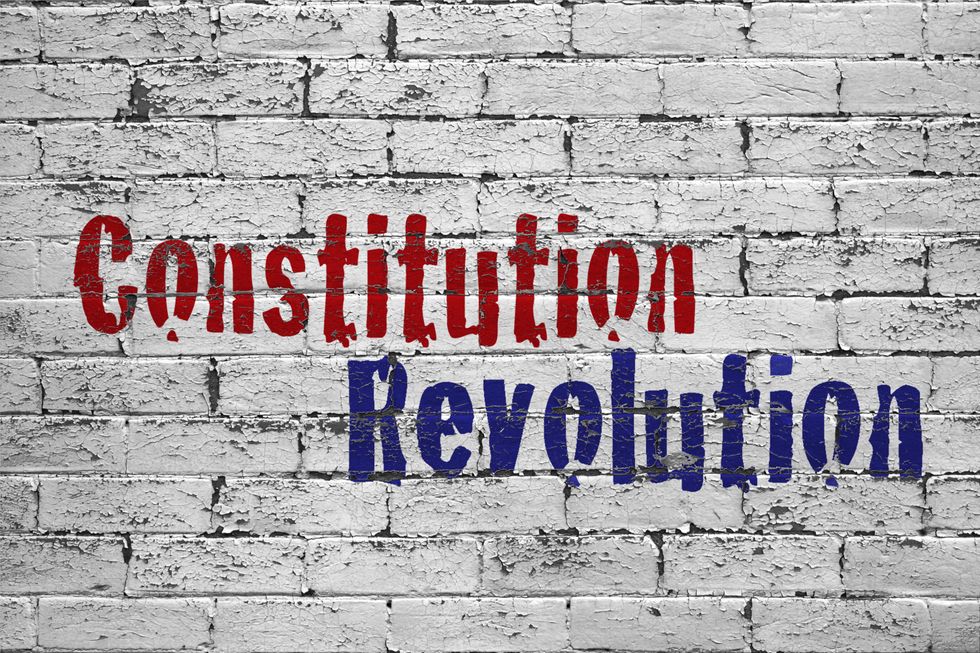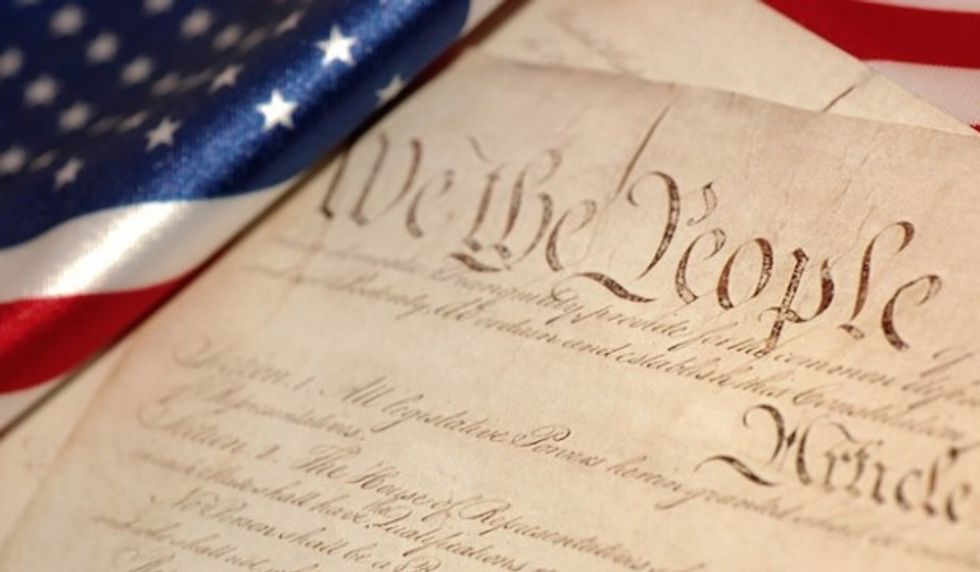
Photo Courtesy of Author.

This story has been updated.
This post is the continuation of a weekly Constitution Revolution series for TheBlaze.com and TheBlaze Radio’s Chris Salcedo Show. To see last week’s lesson, click here.
–
This week, we’re going to stay in Article 1, Section 7 and talk about the lawmaking process. More specifically, we’re going to talk about the president’s role - or lack thereof - in the process of making laws in this country.
Today, we expect our presidents to have a plan and a policy to address every aspect of American life. But the president was never intended to be a policy maker. When it comes to the lawmaking process, all he has is the power to veto. So after Congress has passed a bill, the president gets to give that bill a thumbs up or a thumbs down. That’s about it.
Beyond that, the president wasn’t granted the power to veto because the Founders were particularly interested in hearing what presidents had to say about the bills that were passed. The primary motivation in giving the president a power to veto legislation is so that he could protect the executive branch from Congressional overreach. The Founders wanted to make sure that the president had a way to prevent members of Congress from voting themselves more power and slowly taking over his role of executing the laws in this country.

Just like we did last week, let's do a quick review on the basics of the Constitutional process for creating laws in this country:
At this point it’s important to clarify that the Constitution provides us with only one process for creating laws - it’s the one we see in Article 1, Section 7. There are no exceptions or asterisks and there isn’t another section of the Constitution that gives the President alternate powers for impacting the legislative process.
To simplify that, after Congress passes a bill, the president can either sign it or he can veto it and send it back to Congress with his objections. That’s the extent of his involvement in the process. The Constitution couldn’t be a whole lot clearer about that.
But let’s take a second to look at just a few of the unconstitutional ways that laws are being made or changed today:
You might notice that none of these methods for creating or amending laws is mentioned in Article 1, Section 7. That’s because they are simply new inventions that our politicians have come up with over the years - and they all serve to make the executive branch much more powerful.
You might also have noticed that each of these newly invented ways of making laws gives the president the ability to bypass Congress in order to get the laws that he wants. But as with so much that goes on in Washington, D.C. today, that is completely backwards.
The Constitution does give Congress the authority to bypass the president and make laws completely on its own (by overriding the president’s veto). But it doesn’t give the president any way of bypassing Congress and making or changing laws entirely on his own. That alone tells us that - when it comes to the lawmaking process - what Congress wants is much more important than what the president wants.
It’s so important for us to realize that our president was never intended to be a policy maker. His role in the legislative process should be minor at best. Remember, under our system of government we have a separation of powers. And for good reason.
“It is not by the consolidation or concentration of powers but by their distribution that good government is effected.”
But when we allow the executive branch to increasingly bypass Congress when making or changing our laws, we are destroying that separation and concentrating a breathtaking amount of power in one branch of government.
It’s not hard to see why putting the power to create or change the laws that bind everyone in this country - as well as the power to execute those laws - into the hands of just one person is a terrible idea.
If nothing else, look at it this way: we now expect any person who wants to be president to spend over $1 billion in an effort to get elected. Any political office that is worth spending $1 billion to win is an office that is far too powerful to be safely entrusted to any one person.
Chad Kent is an author and speaker with a unique style that makes the Constitution simple and fun. Listen to Chad every Saturday during The Chris Salcedo Show on TheBlaze Radio, visit his web site at www.ChadKentSpeaks.com, and like his Facebook page at www.facebook.com/theconstitutionguy.
Feature Image: Courtesy of Author
–
TheBlaze contributor channel supports an open discourse on a range of views. The opinions expressed in this channel are solely those of each individual author.